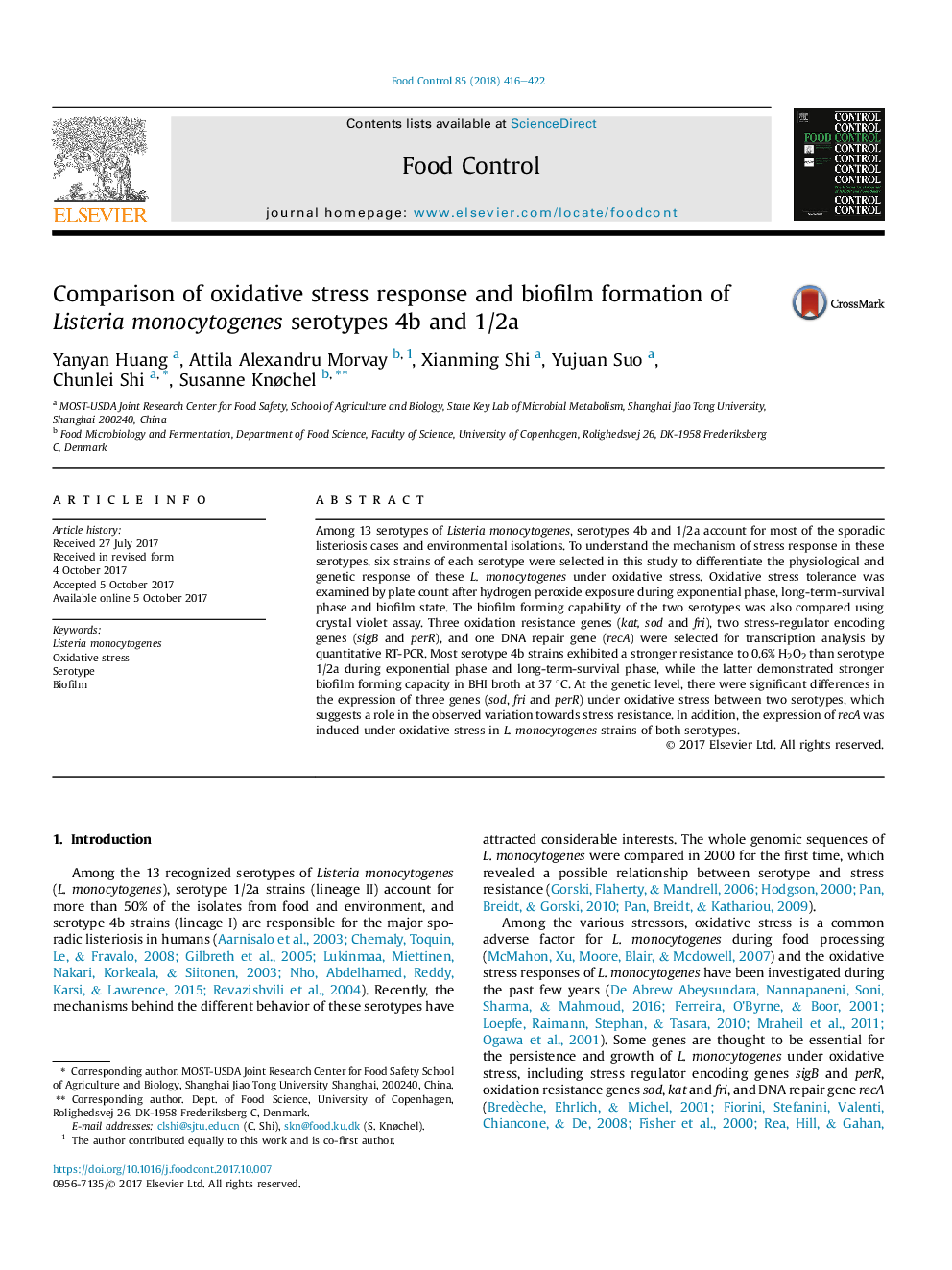| Article ID | Journal | Published Year | Pages | File Type |
|---|---|---|---|---|
| 8888248 | Food Control | 2018 | 7 Pages |
Abstract
Among 13 serotypes of Listeria monocytogenes, serotypes 4b and 1/2a account for most of the sporadic listeriosis cases and environmental isolations. To understand the mechanism of stress response in these serotypes, six strains of each serotype were selected in this study to differentiate the physiological and genetic response of these L. monocytogenes under oxidative stress. Oxidative stress tolerance was examined by plate count after hydrogen peroxide exposure during exponential phase, long-term-survival phase and biofilm state. The biofilm forming capability of the two serotypes was also compared using crystal violet assay. Three oxidation resistance genes (kat, sod and fri), two stress-regulator encoding genes (sigB and perR), and one DNA repair gene (recA) were selected for transcription analysis by quantitative RT-PCR. Most serotype 4b strains exhibited a stronger resistance to 0.6% H2O2 than serotype 1/2a during exponential phase and long-term-survival phase, while the latter demonstrated stronger biofilm forming capacity in BHI broth at 37 °C. At the genetic level, there were significant differences in the expression of three genes (sod, fri and perR) under oxidative stress between two serotypes, which suggests a role in the observed variation towards stress resistance. In addition, the expression of recA was induced under oxidative stress in L. monocytogenes strains of both serotypes.
Related Topics
Life Sciences
Agricultural and Biological Sciences
Food Science
Authors
Yanyan Huang, Attila Alexandru Morvay, Xianming Shi, Yujuan Suo, Chunlei Shi, Susanne Knøchel,
